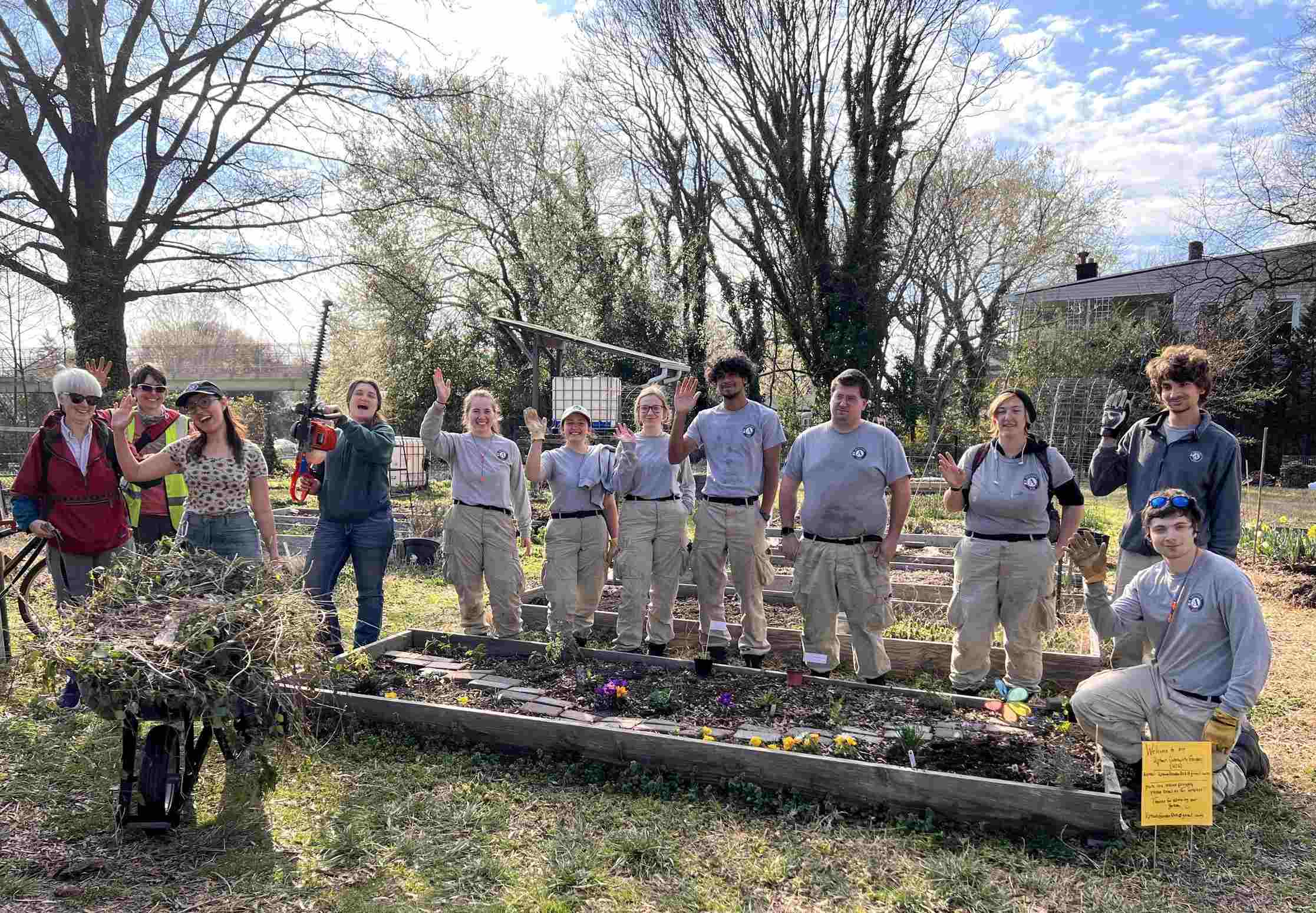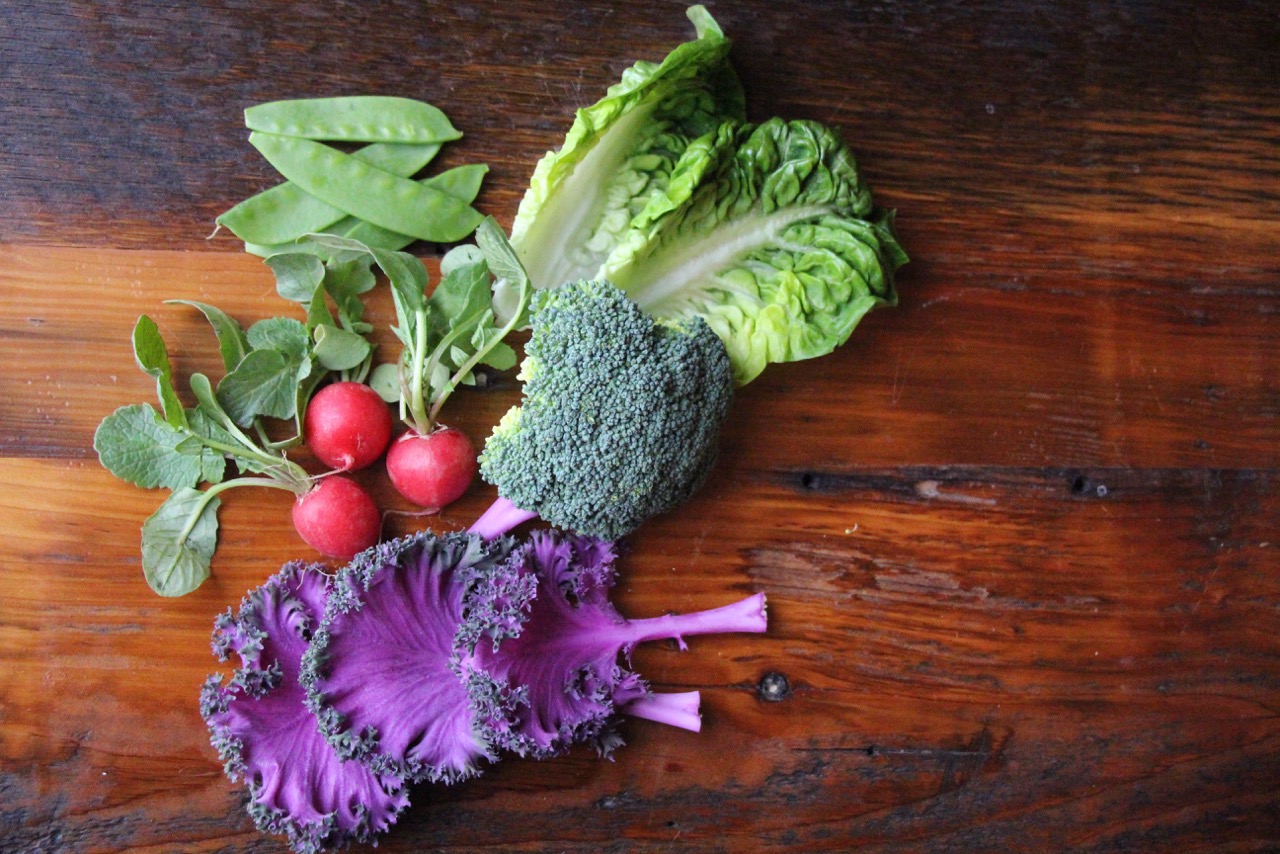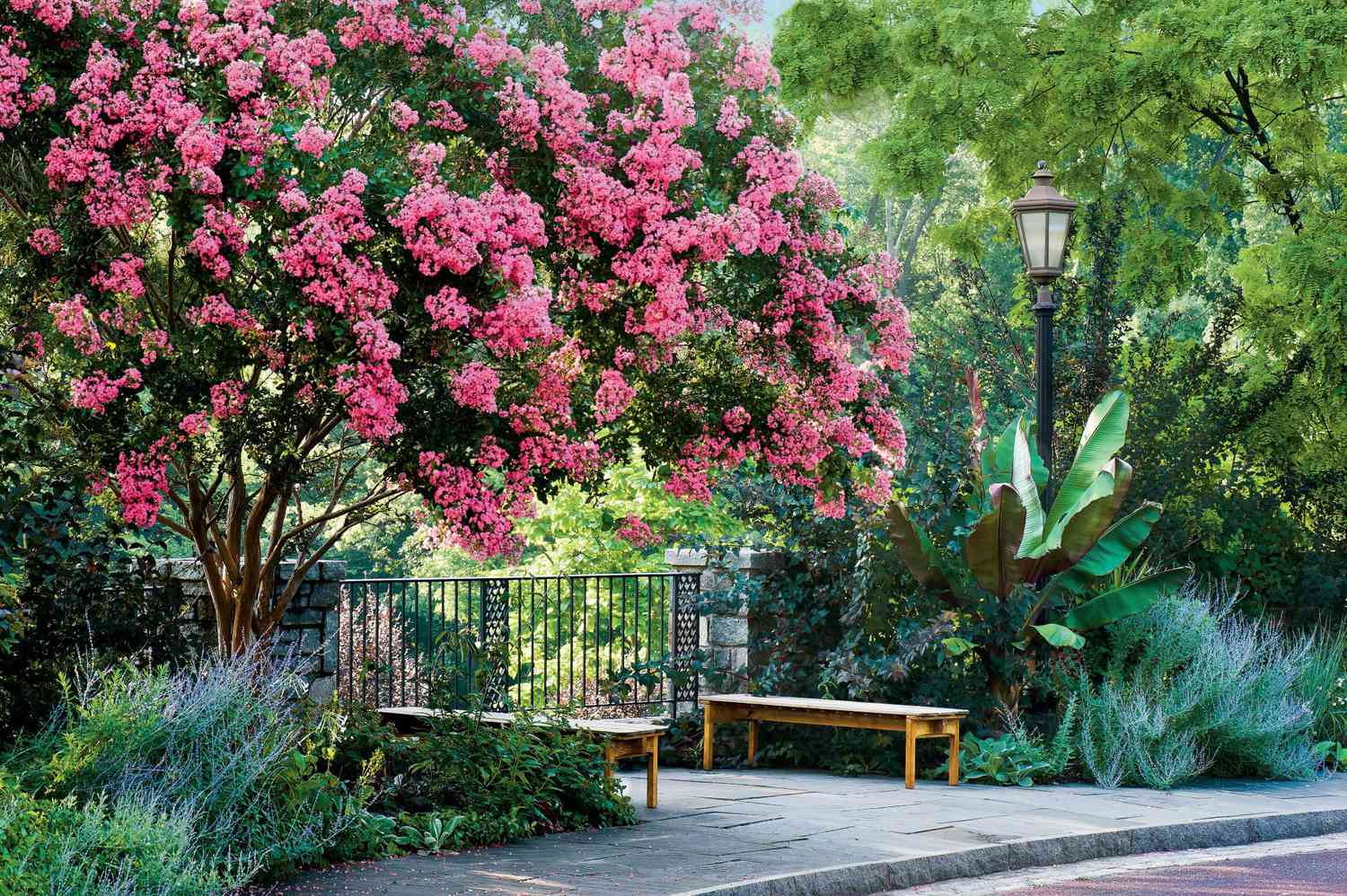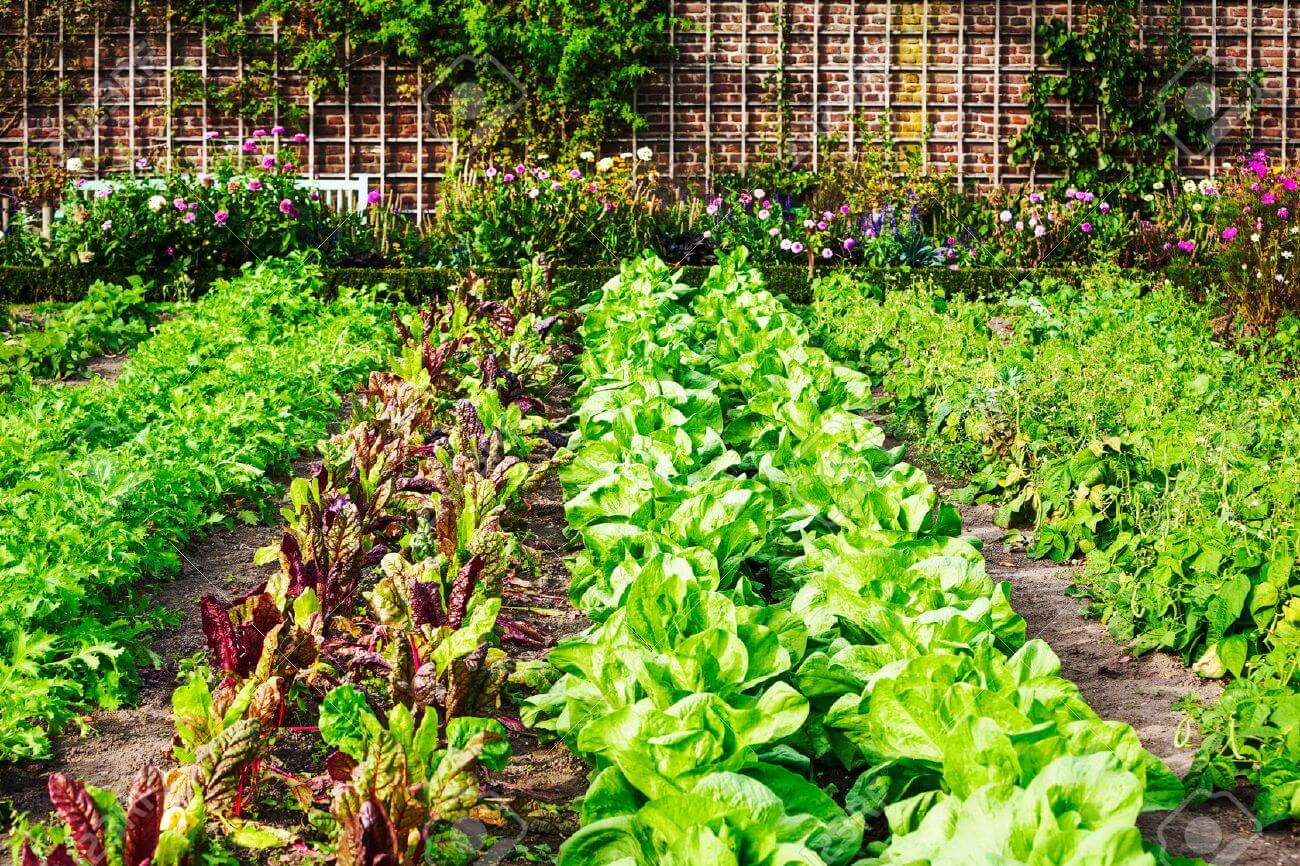Home>Types of Gardening>Ornamental Gardening>What Trees Are Blooming Now In Virginia


Ornamental Gardening
What Trees Are Blooming Now In Virginia
Modified: January 22, 2024
Discover the latest in ornamental gardening in Virginia as you explore the beautiful blooms of trees currently in season. Enhance your garden with vibrant colors and fragrant blossoms.
(Many of the links in this article redirect to a specific reviewed product. Your purchase of these products through affiliate links helps to generate commission for Chicagolandgardening.com, at no extra cost. Learn more)
Table of Contents
Introduction
Welcome to the beautiful world of ornamental gardening! If you’re a gardening enthusiast in Virginia, you’re in for a treat. The lush landscapes and mild climate of this region are perfect for a wide variety of ornamental plants, adding color, fragrance, and beauty to your outdoor spaces.
Ornamental gardening is the art of cultivating plants primarily for their aesthetic value. It involves careful selection and arrangement of plants to create visually pleasing landscapes, whether it’s a sprawling garden, a cozy backyard, or a charming balcony. From flowering trees to vibrant shrubs, there are numerous options to add charm and character to your outdoor space.
Virginia’s diverse climate, with its hot summers and mild winters, creates an ideal environment for a wide range of ornamental plants. In this article, we’ll explore some of the stunning trees and shrubs that are currently in bloom in Virginia, adding a burst of color and fragrance to the landscape.
Whether you’re a seasoned gardener looking for new additions to your garden or a beginner taking the first steps on your gardening journey, there’s something for everyone. So, put on your gardening gloves, grab your tools, and let’s dive into the enchanting world of ornamental gardening in Virginia!
Cherry Blossoms
One of the most enchanting sights in the springtime is the blooming of cherry blossoms. Virginia is fortunate to have an abundance of cherry trees, adorning parks, neighborhoods, and city streets with their delicate and vibrant flowers.
When cherry blossoms bloom, they create a breathtaking display of beauty and elegance. The most iconic cherry blossom tree is the Yoshino cherry, known for its clusters of pale pink to white flowers. These trees can be found throughout Virginia, particularly in popular cherry blossom destinations like Arlington and along the Tidal Basin in Washington, D.C.
The blooming of cherry blossoms is a highly anticipated event, drawing visitors from near and far to witness the spectacular display of nature’s artistry. The peak bloom period usually lasts for a week or two, depending on weather conditions. It’s a magical time to take a stroll under the canopy of cherry blossoms, capturing stunning photos and soaking in the serene atmosphere.
Cherry blossom festivals and events are held in various locations across Virginia, celebrating the arrival of spring and the beauty of these delicate flowers. From cultural performances to food stalls, these festivals provide a wonderful opportunity to immerse yourself in the joyous spirit of the season.
Whether you have a cherry blossom tree in your own backyard or plan to visit one of the many cherry blossom destinations in Virginia, these trees never fail to captivate and inspire. Standing beneath their blossoms, you can’t help but appreciate the ephemeral nature of life and the reminder to cherish the moments of beauty that nature graciously offers.
So, as spring arrives in Virginia, keep an eye out for the delightful cherry blossoms that adorn the landscape and prepare to be enthralled by their delicate charm and picturesque allure.
Dogwood Trees
One of the most beloved and iconic flowering trees in Virginia is the dogwood tree. With its delicate blossoms and elegant structure, the dogwood tree is a true gem in the ornamental gardening world.
The dogwood tree, scientifically known as Cornus florida, is native to Virginia and is often referred to as the “Virginia dogwood.” Its flowers bloom in late spring, showcasing clusters of small, four-petaled blossoms that come in shades of white, pink, and even red. These flowers create a beautiful contrast against the tree’s dark green leaves, making it a focal point in any landscape.
Aside from its stunning flowers, the dogwood tree also offers a vibrant display of fall foliage. In the autumn months, the leaves transform into shades of deep red, purple, and orange, adding a burst of color to the landscape.
When planting dogwood trees, it’s important to choose a location that provides partial shade and well-drained soil. They thrive in areas where they receive morning sunlight and afternoon shade. Dogwoods are relatively low maintenance, requiring regular watering and occasional pruning to maintain their shape and health.
Besides their beauty, dogwood trees also hold cultural and historical significance. They are often associated with Christianity and the crucifixion of Jesus Christ due to the legend that the wood of the dogwood tree was used to construct the cross. Additionally, the dogwood is the state flower of Virginia, symbolizing the state’s natural beauty and heritage.
Whether you plant a dogwood tree in your garden or simply admire the ones in bloom around Virginia, these enchanting trees are sure to captivate with their delicate flowers and vibrant foliage. Take a moment to appreciate their beauty and the sense of tranquility they bring to the landscape.
So, keep an eye out for the splendor of dogwood trees in Virginia’s gardens, parks, and forests, and let their timeless elegance inspire and uplift your spirit.
Magnolia Trees
When it comes to majestic beauty and alluring fragrance, magnolia trees are hard to beat. These stunning trees are a symbol of grace and elegance, and they add a touch of southern charm to the Virginia landscape.
Magnolia trees belong to the Magnoliaceae family and are known for their large, showy flowers that can range in color from creamy white to vibrant pink. Their blossoms are renowned for their delightful fragrance, which fills the air and attracts bees and butterflies.
One popular variety of magnolia tree is the Southern Magnolia (Magnolia grandiflora), which is native to the southeastern United States, including parts of Virginia. This magnificent tree features large, glossy leaves and produces fragrant white flowers. The blossoms are followed by cone-like fruits that contain striking red seeds, adding further visual interest to the tree.
Magnolia trees are known for their longevity and can live for decades if properly cared for. They thrive in full sun to partial shade and prefer moist, well-draining soil. It’s important to provide them with ample space to grow, as they can reach heights of up to 80 feet and have a spread of 40 feet.
These trees are not only visually stunning but also offer a sense of nostalgia and history. Magnolia trees have been featured in literature, art, and garden design for centuries, and they continue to be a beloved symbol of grace and timeless beauty.
Whether you plant a magnolia tree yourself or simply admire the ones in bloom across Virginia, these majestic trees will undoubtedly leave a lasting impression. Take a moment to breathe in their sweet fragrance and marvel at their grandeur. You can also incorporate magnolia blossoms into floral arrangements or potpourri to enjoy their delightful scent indoors.
So, keep an eye out for the magnificent magnolia trees in gardens, parks, and neighborhoods throughout Virginia, and let their beauty and fragrance transport you to a world of serenity and elegance.
Redbud Trees
Adding a splash of vibrant color to the Virginia landscape in early spring, redbud trees are a sight to behold. These small to medium-sized deciduous trees are a favorite among gardeners for their showy blossoms and unique charm.
The redbud tree, scientifically known as Cercis canadensis, is native to eastern North America, including Virginia. It is prized for its clusters of small, pink to purple flowers that emerge along the branches and trunk, creating a breathtaking display that is hard to miss.
Redbud trees typically bloom in early spring, before their leaves appear, creating a striking contrast between the colorful blossoms and the bare branches. The flowers are not only visually appealing but also attract pollinators such as bees and butterflies, contributing to the ecosystem’s overall health.
Aside from their stunning spring bloom, redbud trees also offer attractive heart-shaped leaves that turn yellow in the fall. They have an interesting branching pattern, with branches that often grow in a zigzag fashion, adding visual interest even during the dormant winter months.
When planting redbud trees, it’s essential to provide them with well-drained soil and a location that receives full to partial sunlight. These trees thrive in a variety of soil types and are relatively low maintenance once established. Regular watering and minimal pruning are necessary to promote healthy growth.
Whether you choose to plant a redbud tree in your garden or simply admire them in their natural habitat, these captivating trees are sure to enhance any landscape. Take a moment to appreciate their delicate flowers, the unique branching pattern, and the overall beauty they bring to the environment.
So, as you explore Virginia’s parks, hikes, and gardens, keep an eye out for the delightful redbud trees in bloom, and let their presence remind you of the natural wonders that surround us.
Tulip Poplar Trees
The Tulip Poplar tree, often referred to as the “tulip tree” or “yellow poplar,” is a magnificent and towering presence in the Virginia landscape. With its distinct tulip-shaped flowers and tall stature, this tree makes a striking addition to any outdoor space.
Despite its name, the Tulip Poplar is not related to actual tulips or poplar trees but belongs to the magnolia family. It is one of the tallest and fastest-growing trees in North America, capable of reaching heights of 100 feet or more. Its leaves are broad and resemble the shape of a tulip, while its flowers are bell-shaped and have a vibrant yellow color.
The Tulip Poplar tree is not just visually appealing; it also serves as an important habitat for various bird species and pollinators. Bees and hummingbirds are particularly fond of its nectar-rich flowers, contributing to the tree’s ecological value.
These trees are relatively low maintenance and can adapt to a range of soil conditions, making them suitable for many areas in Virginia. They prefer moist, well-drained soils and full sun to partial shade. When planting a Tulip Poplar, it is crucial to provide enough space for its large canopy to spread out.
Aside from its ornamental value, the Tulip Poplar has historical significance in Virginia. It’s been used in construction, furniture-making, and even as a source of medicine by Native American tribes. The tree’s straight trunk and durable wood make it highly desirable for a variety of purposes.
When the Tulip Poplar trees bloom in Virginia, their vibrant yellow flowers create a spectacle to behold. The sight of these striking trees adorned with their unique blossoms is sure to leave a lasting impression. Whether you encounter them while hiking in the forest, strolling through a park, or even in your own backyard, take a moment to appreciate their beauty and the contribution they make to Virginia’s natural landscape.
So, keep an eye out for these towering giants during your explorations in Virginia, and let the majesty of the Tulip Poplar trees inspire awe and appreciation for the wonders of nature.
Crabapple Trees
If you’re looking to add a burst of color to your garden, look no further than the captivating beauty of crabapple trees. These ornamental trees, known for their vibrant blossoms and small fruit, bring a touch of charm and elegance to the Virginia landscape.
Crabapple trees, part of the Malus genus, are a diverse group of trees that come in various sizes and colors. They are renowned for their abundant, showy flowers, which can range from white and pink to deep red. These blossoms often appear in clusters, creating a stunning visual display.
One of the distinct features of crabapple trees is their small fruit, which resembles tiny apples. These fruits usually persist on the tree throughout the fall and can vary in color, from vibrant red to golden yellow. The fruit not only adds visual interest to the tree but also serves as a valuable food source for birds and wildlife.
Crabapple trees are highly adaptable and can thrive in a variety of soil types, although they prefer well-draining soil. They also tolerate different sun exposures, ranging from full sun to partial shade. When selecting a crabapple tree for your garden, consider the tree’s mature size, flower color, and fruit characteristics.
Aside from their aesthetic appeal, crabapple trees hold cultural significance as well. In many traditions, these trees symbolize love, purity, and beauty. Their cheerful blossoms often herald the arrival of spring, bringing joy and optimism to the surroundings.
Whether planted as standalone specimens or as part of a mixed border, crabapple trees are sure to make a statement in your garden. Their stunning flowers and striking fruits create year-round visual interest, attracting attention and admiration from both humans and wildlife.
So, as you explore the beautiful landscapes of Virginia, keep an eye out for the delightful crabapple trees in bloom, and let their vibrant colors and graceful presence inspire you to create your own garden oasis.
Pear Trees
When it comes to fruit-bearing trees, pear trees are a popular choice for their delicious harvests and ornamental value. Known for their sweet and juicy fruits, pear trees add beauty and productivity to Virginia’s landscapes.
Pear trees belong to the Pyrus genus and come in a variety of cultivars, each with its unique flavor profile and growing requirements. These trees can be categorized into two main types: European pears (Pyrus communis) and Asian pears (Pyrus pyrifolia). Both types offer an abundance of delightful fruit, making them a favorite among gardeners and fruit enthusiasts.
In addition to their delectable fruits, pear trees also provide aesthetic appeal throughout the year. During the spring season, they illuminate the landscape with clusters of delicate white flowers, attracting pollinators to ensure a bountiful harvest. As the flowers fade, the tree’s glossy green leaves take center stage, providing a pleasant backdrop to the surrounding environment.
When it comes to planting pear trees, it’s essential to select the right variety for your specific climate and growing conditions. Most pear trees require full sun exposure and well-draining soil. Many cultivars require cross-pollination with another compatible pear tree to ensure fruit production, so it’s important to consider this when planning your garden.
Once established, pear trees require regular watering, especially during dry periods, to ensure healthy growth and fruit development. Pruning is also necessary to maintain tree shape, promote airflow, and remove any diseased or damaged branches.
Whether you’re planting pear trees for their fruit or simply for their ornamental beauty, these trees will undoubtedly enhance your outdoor space. Harvesting ripe pears from your own tree is a rewarding experience, and their fresh, juicy flavor is second to none.
So, as you explore Virginia’s orchards, gardens, and even neighborhood landscapes, keep an eye out for the delightful pear trees adorning the scenery. Their abundance of fruits and striking beauty will surely inspire you to incorporate them into your own gardening endeavors.
Azalea Shrubs
When it comes to vibrant and showy blooms, azalea shrubs never fail to captivate the eye. These stunning flowering shrubs are a popular choice among gardeners and landscapers in Virginia, adding a burst of color to gardens, borders, and even woodland areas.
Azaleas belong to the Rhododendron genus and come in a wide range of colors, including shades of pink, purple, red, white, and even bi-color variations. Their flowers often appear in clusters, blanketing the shrub in a breathtaking display of color and beauty. These blooms typically appear in spring, signaling the arrival of warmer weather and the awakening of the garden.
One of the reasons why azaleas are beloved by many is their adaptability to different growing conditions. They thrive in acidic soil with good drainage, and they prefer areas with dappled shade or morning sun with afternoon shade. This makes them ideal for woodland gardens or areas with partial shade.
In addition to their visual appeal, azalea shrubs also offer fragrant flowers that can fill the air with a lovely, sweet aroma. These intoxicating scents attract not only butterflies and bees but also garden enthusiasts who can’t resist the allure of their fragrance.
Not only do azalea shrubs come in a variety of colors, but they also come in different sizes and growth habits. From compact and upright varieties to sprawling and cascading forms, there’s an azalea shrub suitable for every garden and landscape design.
When it comes to care, azalea shrubs benefit from regular watering, especially during dry spells, and a layer of organic mulch to help retain moisture and suppress weeds. Pruning should be done immediately after flowering to maintain shape and encourage bushier growth.
Whether you plant azalea shrubs as standalone specimens or as part of a mixed border, their vibrant blooms are sure to steal the show. Their stunning flowers, combined with their adaptability and ease of care, make them a popular choice for both experienced and novice gardeners alike.
So, as you explore the landscapes of Virginia, keep an eye out for the brilliant azalea shrubs in bloom, and let their vibrant colors and sweet fragrances inspire you to create your own floral paradise.
Rhododendron Shrubs
When it comes to luxurious and captivating blooms, rhododendron shrubs take center stage. These stunning flowering shrubs, known for their large and colorful blossoms, are a favorite among gardeners in Virginia.
The rhododendron shrubs belong to the Rhododendron genus, which includes a wide variety of species and cultivars. They come in a range of colors, from shades of pink, purple, and red to white and even bi-color combinations. The flowers typically appear in clusters, creating a visually dramatic impact.
One of the striking features of rhododendron shrubs is their ability to produce large, evergreen leaves, providing year-round interest even when not in bloom. These glossy green leaves are often leathery in texture and take on a deep, rich shade that adds beauty to the landscape. Some varieties may also have interesting foliage colors, such as bronze or variegated patterns.
Rhododendron shrubs thrive in areas with well-drained, acidic soil and prefer partial shade or filtered sunlight. They are particularly well-suited for woodland gardens or areas with dappled shade. They benefit from regular watering, especially during dry periods, and the application of acidic fertilizers to maintain optimal growth and health.
These shrubs not only add color and beauty to gardens, but they also attract pollinators such as butterflies and bees. Their nectar-rich flowers provide an important food source for these beneficial insects, contributing to the overall health of the garden ecosystem.
In addition to their ornamental value, some rhododendron shrubs have symbolic meanings in different cultures. For example, in Japan, the rhododendron species known as “Yama
- Baites and Kagetsu-no-hana”, which translates to “Mountain Pride” and “Flower of the Moonlight”, respectively, are highly treasured and symbolize elegance, beauty, and tranquility.
- In ancient Greek mythology, the rhododendron is associated with the nymph Rhododendron, who was transformed into the shrub as a result of her unrequited love for the god Apollo.
Whether you plant rhododendron shrubs as focal points in your garden or as part of mixed borders, their stunning blooms and attractive foliage are sure to make a statement. Enjoy the vibrant colors and the luxurious presence they bring to your outdoor space.
So, keep an eye out for the magnificent rhododendron shrubs, whether in gardens, parks, or woodlands, and let their beauty inspire you to create a landscape filled with color, texture, and natural splendor.
Conclusion
Ornamental gardening in Virginia offers a world of beauty and enchantment. From the delicate blossoms of cherry trees to the vibrant colors of azalea and rhododendron shrubs, the variety of ornamental plants in this region is truly remarkable. Whether you’re an experienced gardener or just starting out, there’s something for everyone to enjoy and appreciate in the world of ornamental gardening.
The blooming of cherry blossoms heralds the arrival of spring and is a spectacle that draws visitors from near and far. The dogwood trees, with their elegant flowers and rich historical significance, add a touch of charm to the landscape. Magnolia trees with their majestic presence and fragrant blooms create a sense of tranquility and elegance.
The redbud trees, with their unique branching pattern and vibrant pink flowers, are a true sight to behold. The graceful tulip poplar trees, with their distinctive tulip-shaped flowers and towering stature, add a touch of grandeur to any outdoor space. The pear trees not only provide delicious fruits but also offer blossoms that exude beauty and elegance.
From the vibrant clusters of flowers on crabapple trees to the vibrant colors of azalea and rhododendron shrubs, these plants bring life and vibrancy to gardens and landscapes throughout Virginia. Their allure extends beyond their visual appeal, with fragrances that fill the air and attract pollinators, enhancing the overall ecosystem.
As you explore the landscapes of Virginia, whether it’s through parks, gardens, or your own backyard, take a moment to appreciate the wonders of ornamental gardening. The beauty and tranquility that these plants bring to the environment can inspire us to connect with nature and cultivate our own piece of paradise.
So, whether you’re planting a cherry blossom tree as a focal point or adorning your garden with azalea shrubs, let your journey into the world of ornamental gardening be filled with joy, creativity, and the natural beauty that Virginia has to offer.







